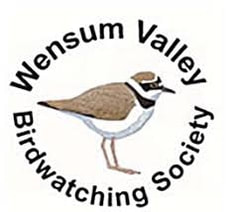|
Speaker: David White Reporter: Sue Gale The Garden Birdwatch scheme, run by the British Trust for Ornithology (BTO), has now been running for 25 years, during which time over 11000 members have submitted over 250,000 records. Norfolk is the county with most members, perhaps not surprisingly as we are such a birdy place! The weekly returns cover not only birds but mammals, insects etc seen in gardens, but most records are of birds. The most commonly seen birds are Blackbird, Robin, Blue Tit and Woodpigeon, in that order, so no surprises there. The sad part is that many species are declining, Greenfinches and Song Thrushes amongst them. The latter are now only found in 20% of gardens when they used to be in almost all of them. The survey allows trends to be recorded, but also looks at seasonal changes. I was interested to learn that the House Sparrow is seen most frequently in late summer, when big family parties might arrive. Reed buntings come in to gardens in February and March, when seed and insects are scarce in the countryside. Blackcaps used to be a rarity in winter, but no longer, as Blackcaps from central Europe have adapted to spend their winters here. Woodpigeons, on the other hand, are seen all year and are not a favourite, probably because they eat so much! Although numbers are often declining, we are likely to see more different species in gardens than we used to. Collared Doves are a relatively recent success story and are now a common sight. In some areas Ring-necked Parakeets are also common, and they have indeed reached Norwich. They can be something of a problem as they roost in large numbers – 60,000 being the largest roost recorded. Also, they can out-compete hole-nesting birds like Marsh Tits.
The survey also records observed plumage variations, beak or other deformities, and signs of disease. Such records allow the spread of diseases to be mapped, and BTO is able to give valuable advice to limit that spread. We are all exhorted to clean our feeders regularly, using boiling water. Greenfinches were very seriously affected by Trichomoniasis , although there are signs of recovery recently. This may be because resistance is developing, or maybe that improved hygiene has helped. Avian pox can affect Great Tits and Dunnocks, but although unsightly it is rarely fatal. Similarly, club foot in finches looks pretty horrible but doesn’t seem to affect the birds adversely. David also told us about the Tawny Owl survey conducted this year, with 14000 people contributing. Early results suggest that the rural population is doing well, but that Urban Tawnies are struggling. The autumn is a good time of year to listen out for these owls as they are especially noisy then. Young birds are being ejected from the parents’ territories and have to find their own! A fascinating insight into valuable ongoing research. I was surprised to see how few members actually participate. Perhaps more will join up after this talk. Many thanks to David.
0 Comments
Leave a Reply. |
Please feel free to read through our reports from our monthly indoor / online meetings. Archives
May 2024
Categories |

 RSS Feed
RSS Feed
